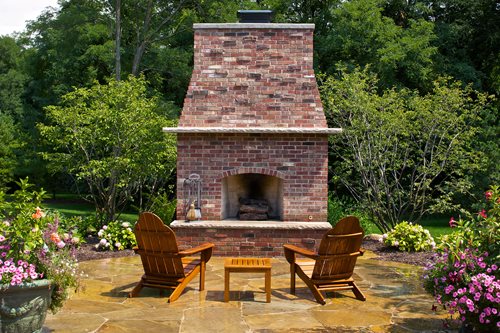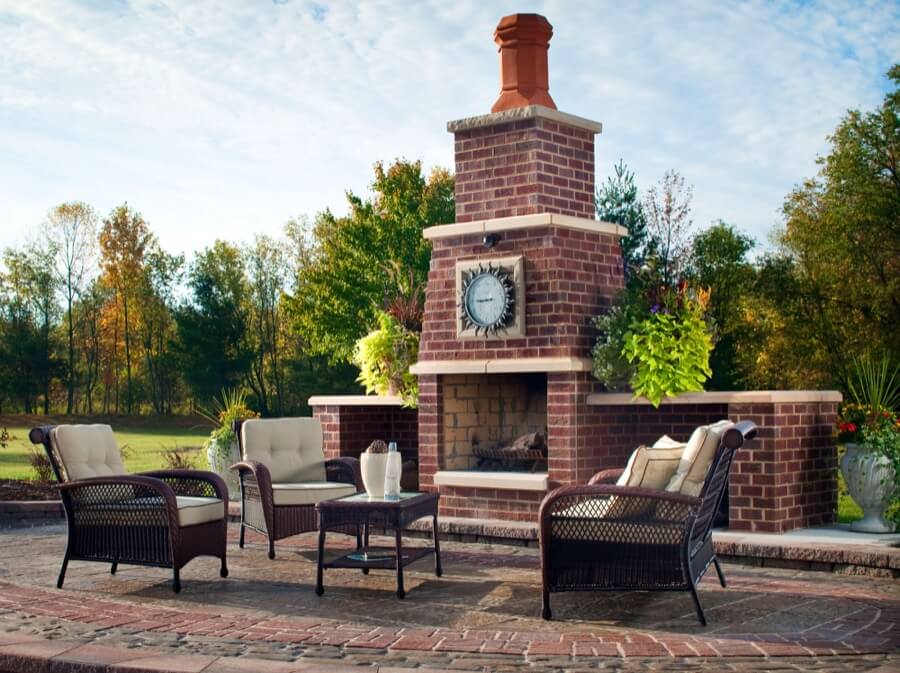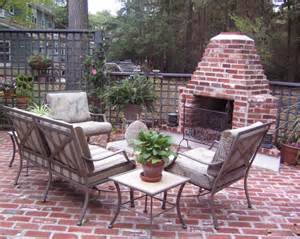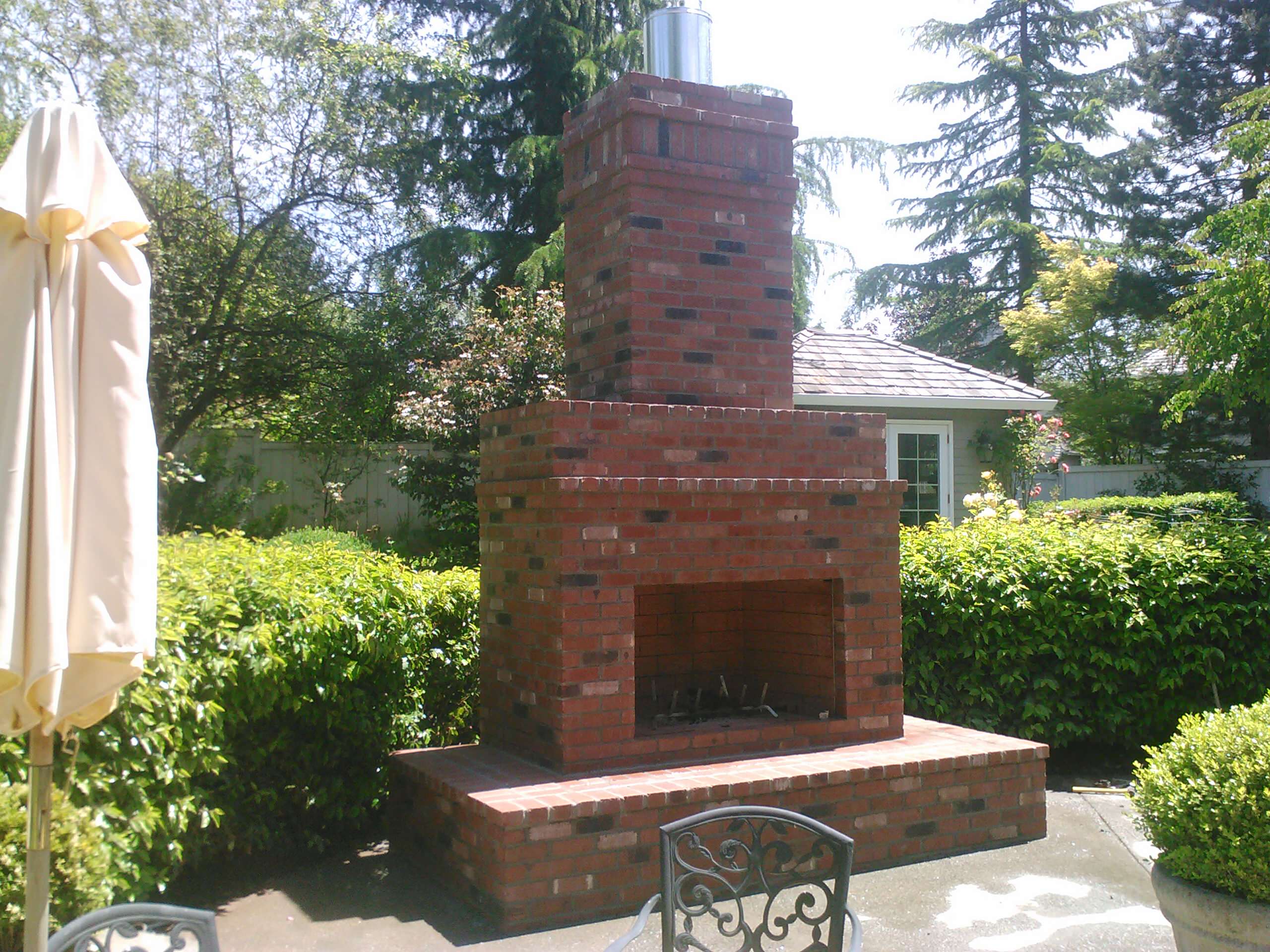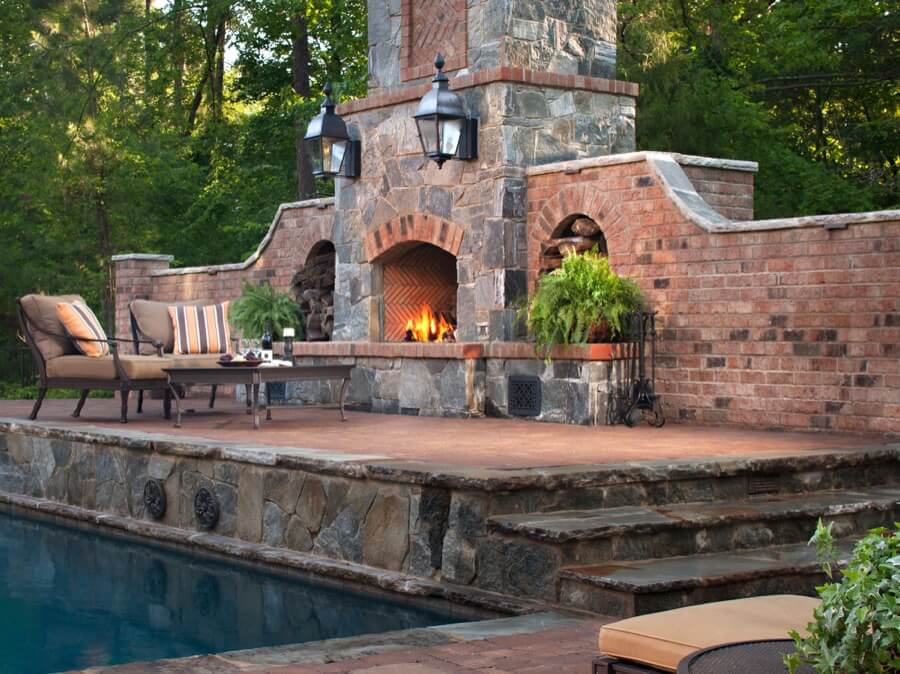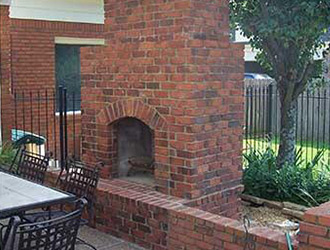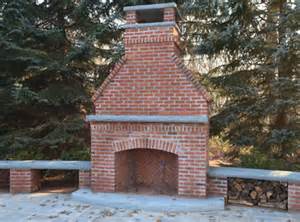A red brick outdoor fireplace brings timeless warmth and character to any backyard. I’ve built numerous brick fireplaces over the years, and they consistently become the focal point of outdoor living spaces. Whether you envision cozy evenings with family or hosting gatherings under the stars, a brick fireplace creates a natural gathering spot. Its durable construction withstands the elements while developing a beautiful patina over time. Let’s explore how to design, build, and enjoy a red brick fireplace that enhances your outdoor experience.
Designing Your Brick Fireplace
The first step is determining the fireplace’s size and style. I typically recommend a height between 4 to 6 feet for comfortable seating around it. A simple rectangular design with clean lines works well in modern yards, while arched openings or corbel details suit traditional spaces. Consider the fireplace’s placement carefully, ensuring it’s at least 10 feet from structures and seating areas. I often position it as a visual anchor in the yard, creating a natural flow from patio to fire.
Material choices extend beyond just bricks. I like using fire-rated red bricks for the interior firebox and more decorative bricks for the exterior facade. Combining different brick patterns, like running bond and stacked bond, adds visual interest. For the hearth, brick, bluestone, or concrete work well, providing a durable surface that complements the overall design. Always check local building codes for size and clearance requirements before finalizing plans.
Think about functional details during the design phase. I include a wood storage niche or an adjacent log rack for convenience. A raised hearth (12 to 18 inches high) doubles as extra seating. For cooking enthusiasts, adding a grill grate or pizza oven attachment transforms the fireplace into an outdoor kitchen. The design should balance aesthetics with practical use, creating a space you’ll enjoy for years.
Choosing the Right Bricks and Mortar
Not all bricks can withstand high heat. I specify fire bricks (also called refractory bricks) for the firebox interior, as they resist cracking under extreme temperatures. For the exterior facade, standard red clay bricks provide classic appeal. Reclaimed bricks add instant character but should be inspected for cracks or spalling before use. I avoid using soft, porous bricks in areas exposed to heavy rain or freezing temperatures.
Mortar selection is equally important. I use a high-temperature refractory mortar for the firebox and a weather-resistant Type N or Type S mortar for the exterior. The mortar color significantly impacts the fireplace’s look, white mortar creates contrast, while red-tinted mortar blends seamlessly. For a weathered appearance, I sometimes use a mortar wash technique after construction to highlight the brick texture.
Consider the brick’s finish and color variation. Machine-made bricks offer uniformity, while handmade bricks have charming irregularities. A mix of dark and light red bricks creates depth, especially when laid in random patterns. I always view brick samples outdoors at different times of day, as sunlight dramatically affects how colors appear. The right combination should complement your home’s exterior and landscape design.

Construction Process and Key Considerations
A proper foundation is crucial for stability. I pour a reinforced concrete footing that extends below the frost line to prevent shifting. The base should be at least 6 inches wider than the fireplace on all sides. For the firebox, I build double-thick brick walls with an air gap to improve heat resistance. Metal lintels support the opening, and a smoke shelf helps with draft control.
Laying bricks requires patience and precision. I start from the corners, using a level and mason’s line to keep courses straight. Every few rows, I check for plumb and adjust as needed. For the firebox, I butter each brick thoroughly to ensure no gaps in the mortar joints. The chimney should extend at least 2 feet above any roof line within 10 feet to prevent downdrafts. A properly sized flue (about 10% of the firebox opening area) ensures good smoke draw.
Finishing touches enhance durability and appearance. I install a metal or stone cap on the chimney to protect against water damage. For added weather resistance, I apply a breathable brick sealer after the mortar cures (about 28 days). Decorative elements like brick corbels or a mantel shelf personalize the design. Always allow new masonry to cure completely before building the first fire, typically 3-4 weeks.
Safety Features and Maintenance
Safety should never be an afterthought. I install a spark arrestor on the chimney to prevent embers from escaping. The surrounding area needs non-combustible materials like gravel, stone, or brick for at least 3 feet in all directions. I recommend keeping a fire extinguisher or garden hose nearby whenever the fireplace is in use. For families with children, adding a metal screen or glass door prevents accidental contact with flames.
Regular maintenance preserves the fireplace’s beauty and function. I inspect the mortar joints annually, repointing any that have cracked or eroded. After winter, I check for spalling bricks that need replacement. The chimney should be swept every year if used frequently, removing creosote buildup that could ignite. During rainy seasons, I cover the firebox opening to prevent water damage when not in use.
Proper storage extends the life of your fireplace tools. I install hooks or a storage box nearby for pokers, brushes, and log grabbers. A waterproof cover protects the entire fireplace during long periods of disuse. With basic care, a well-built brick fireplace can last decades, becoming more charming with age.
Enhancing the Fireplace Area
Thoughtful landscaping frames the fireplace beautifully. I plant low-growing, fire-resistant plants like lavender or boxwood around the base. For seating, weather-resistant chairs or built-in stone benches create an inviting circle. String lights or wall-mounted lanterns provide ambient lighting for evening gatherings. A rustic side table or stone ledge offers space for drinks and snacks.
For all-season use, I sometimes add a pergola or roof extension overhead. This provides shelter from light rain while allowing smoke to dissipate. In colder climates, I position the fireplace to block prevailing winds, often incorporating it into a larger outdoor kitchen or seating wall. The surrounding patio material should complement the bricks, flagstone and brick combinations work particularly well.
Accessorizing makes the space more functional. I include a log rack or storage bin to keep firewood dry and accessible. A metal bucket nearby holds kindling and fire starters. For cooking enthusiasts, adding adjustable grill grates, a swing-out arm for pots, or even a built-in pizza stone expands the fireplace’s utility. The goal is creating a space that invites relaxation and connection.
Cost Considerations and DIY Potential
Professional installation typically costs between $3,000 to $10,000 depending on size and complexity. The price reflects materials, labor, and site preparation. I find most homeowners recoup this investment through increased property value and outdoor living enjoyment. For budget-conscious projects, a simple firebox with modest chimney provides the same warmth at lower cost.
DIY construction is possible for experienced masons. I recommend starting with pre-designed plans from reputable sources. The firebox requires the most skill, so some homeowners hire a pro for this part and handle the exterior themselves. Renting specialized tools like a brick saw and mortar mixer makes the job easier. Always get necessary permits and inspections to ensure safety.
Material choices greatly affect costs. New bricks cost more but offer consistency, reclaimed bricks save money but require more labor to clean and sort. Concrete pavers can substitute for some brick elements to reduce expenses. The most economical designs use standard sizes to minimize cutting waste. Investing in quality materials upfront prevents costly repairs later.
How long does a brick outdoor fireplace last?
A well-built brick fireplace can last 50 years or more with proper maintenance. The key factors are quality materials, correct construction techniques, and regular upkeep. I’ve seen century-old brick fireplaces still functioning beautifully because they used high-grade bricks and thick mortar joints. Annual inspections and prompt repairs of any cracked mortar or spalled bricks significantly extend the lifespan. In harsh climates, applying a breathable water repellent every few years helps prevent freeze-thaw damage. The firebox may need rebuilding every 15-20 years depending on usage, while the exterior facade often lasts much longer.
Can I convert my brick fireplace to gas?
Yes, conversion is possible but requires careful planning. I recommend hiring a professional to install a gas burner insert designed for outdoor use. The firebox must be properly sized for the burner, typically requiring at least 18 inches of clearance on all sides. You’ll need to run a gas line from your home’s supply, which may involve trenching. Many homeowners appreciate the convenience of gas while keeping the brick’s aesthetic appeal. For flexibility, some systems allow switching between wood and gas. Always check local codes, as some areas restrict gas fire features in certain locations.
What’s the best way to clean red brick?
For routine cleaning, I use a stiff brush and mild detergent solution. Avoid pressure washers on older brickwork, as they can damage mortar joints. For stubborn stains, a paste of baking soda and water gently lifts discoloration. Mold or mildew responds well to diluted white vinegar (1 part vinegar to 4 parts water). Never use acidic cleaners on brick, as they degrade the mortar over time. After cleaning, I rinse thoroughly with plain water. For smoke stains inside the firebox, a wire brush removes loose debris before applying a specialized fireplace cleaner. Always test cleaning methods on an inconspicuous area first.
How far should the fireplace be from my house?
Most building codes require at least 10 feet clearance from any structure, including your home, garage, or wooden decks. I prefer 15 feet when space allows, providing better airflow and reducing smoke issues. The chimney should extend at least 2 feet above any roof line within 10 feet horizontally. Consider prevailing wind directions when siting the fireplace to minimize smoke blowing toward seating areas or neighbors. Check local regulations, as some areas have specific requirements based on property lines or overhead trees. Proper placement ensures both safety and enjoyment.
Can I build a brick fireplace on an existing patio?
Yes, but the patio must have adequate structural support. I reinforce the area with additional concrete footings that extend below frost depth. The fireplace base should be at least 6 inches thick and extend beyond the planned footprint by several inches. For paver patios, I remove pavers from the construction area and build a proper concrete foundation. Never build directly on top of pavers or thin concrete slabs, as shifting can crack the masonry. If unsure about your patio’s capacity, consult a structural engineer before beginning construction.
What’s the best mortar for outdoor brick fireplaces?
For the firebox, I use refractory mortar rated for at least 2000°F. The exterior requires Type N or Type S mortar, which offer good weather resistance. In freeze-thaw climates, I add a mortar admixture that improves flexibility and water repellency. The mortar color should complement your bricks, I typically use a natural gray for traditional looks or add iron oxide pigments to match reddish tones. Avoid using standard interior mortar outside, as it degrades quickly when exposed to moisture. Proper mortar selection prevents cracking and spalling, ensuring your fireplace remains beautiful and safe for years.
Beautiful Outdoor Fireplace Ideas Install-It-Direct
Outdoor Fireplaces u0026 Patios – Memphis TN – The Chimney Doctor
Outdoor Fireplaces – Huntsville Brick Stone
Five Fabulous Outdoor Fireplace Ideas – Coogans Landscape Design
Backyard Fireplaces: Options and Regulations Require Research
Related Posts:

